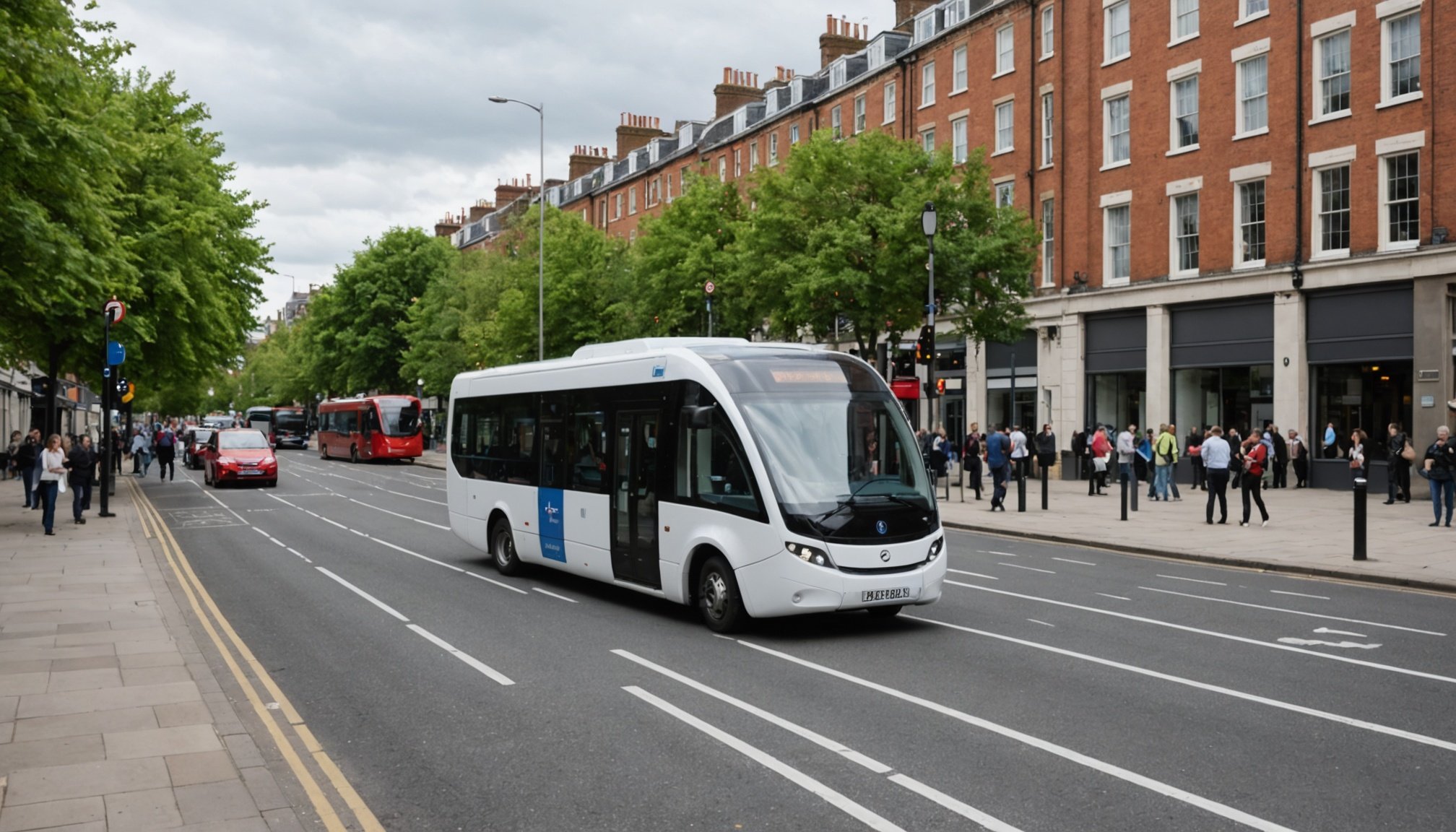Overview of Smart Transportation Technologies
Smart transportation technologies signify the integration of advanced technologies to enhance urban mobility. These innovative systems include, but are not limited to, autonomous vehicles, smart traffic management, and integrated public transport systems. The primary objective is to optimise travel efficiency, safety, and sustainability within urban settings.
Definition and Types of Smart Transportation Technologies
Smart transportation encompasses a range of technologies. Autonomous vehicles, for instance, are equipped with sensors and software to navigate without human intervention, offering potentially safer and more efficient travel. Smart traffic management systems utilise IoT sensors and real-time data to regulate traffic flow, thus minimising congestion. Similarly, integrated public transport systems employ contactless ticketing and real-time tracking to streamline operations and improve user experience.
Also read : Boosting stem passion among uk girls: innovative approaches to elevate educational engagement
The Role of Technology in Enhancing Urban Mobility
Technology plays a pivotal role in transforming urban mobility. By leveraging data analytics and AI, smart transportation systems can predict and respond to travel demands effectively. This adaptability ensures a seamless travel experience, reduces environmental impact, and facilitates sustainable growth in urban environments.
Overview of Current Usage in UK Cities
In the UK, cities like London and Manchester are embracing smart transportation solutions. London has integrated contactless ticketing across its vast public transport network, while Manchester is piloting autonomous buses. These advancements illustrate the growing adoption of smart technologies to enhance the efficiency and sustainability of urban mobility.
Have you seen this : Harnessing urban potential: how smart parking innovations transform uk cities for enhanced efficiency
Benefits of Smart Transportation Technologies
Smart transportation technologies offer numerous benefits, most notably, improved traffic flow and environmental sustainability. By leveraging advanced systems, cities can significantly reduce traffic congestion. This is achieved through smart traffic management systems, which dynamically adjust traffic signals and reroute vehicles in real-time, resulting in smoother flows and reduced waiting times. Such improvements are not only convenient for drivers but also enhance safety by decreasing the likelihood of accidents at congested intersections.
Moreover, smart technologies contribute significantly to environmental sustainability. Through the optimization of traffic systems, there is a marked reduction in idle time for vehicles, which leads to decreased carbon emissions. By limiting unnecessary fuel consumption, these systems directly support cleaner air initiatives and help cities move closer to their sustainability goals.
Enhanced safety is another prime advantage of smart transportation systems. By integrating advanced sensors and communication tools, these systems ensure better accessibility and safer travel for all users, including pedestrians and cyclists. This creates a more inclusive urban environment and enhances overall user experience.
Incorporating these technologies is a forward-thinking strategy in creating efficient, green, and safe urban spaces, making cities more livable and sustainable.
Case Studies of Smart Transportation Implementation in UK Cities
Exploring smart city examples in the UK reveals diverse applications of technology in urban settings. These implementations showcase innovative approaches to improve transportation infrastructure and urban living.
Case Study: London
London’s smart transportation projects aim to tackle congestion and pollution challenges. Initiatives include the use of real-time data to streamline traffic flow and enhance public transport systems. The impact extends to a reduction in congestion and improvements in air quality. Public transportation has seen significant advancements with the integration of data-driven solutions, making commutes more efficient and environmentally friendly.
Case Study: Manchester
In Manchester, the focus has been on smart traffic lights, which adjust to current traffic conditions, thereby affecting commuter behaviour positively. The introduction of intelligent signals has resulted in smoother traffic flow and reduced travel times. Collaborating with tech companies has been crucial in advancing these developments, providing expertise and resources for implementation.
Case Study: Bristol
Bristol has implemented real-time data usage to enhance public transit operations. This approach has fostered community engagement, encouraging public participation in smart initiatives. Resulting lessons from Bristol highlight the importance of considering community input in technological advancement. Future scalability remains a focus, with efforts directed towards building on current successes to expand smart city capabilities.
Challenges in Implementing Smart Transportation Technologies
Navigating the implementation challenges of smart transportation technologies requires tackling several hurdles. One of the most pressing issues is the high costs associated with both deployment and ongoing maintenance of advanced systems. Installing cutting-edge technology often demands significant financial investment, which can be a barrier for cities and governments with limited budgets.
Beyond the financial aspect, there is the complex task of integrating new technologies with existing transportation infrastructures. This integration is not a simple plug-and-play process. Current systems may be outdated or incompatible, requiring extensive modifications to accommodate new smart solutions. The lack of standardised protocols further exacerbates these technological barriers, making seamless integration a formidable task.
Regulatory and policy issues also pose considerable challenges. New laws and guidelines must be established to govern the use of smart transportation technologies, ensuring safety and compliance while fostering innovation. Addressing these policy hurdles often demands collaboration between multiple stakeholders, including government bodies, technology developers, and transportation agencies. This can slow down the implementation process as negotiations and consensus-building take time.
Therefore, while the benefits of smart transportation technologies are clear, overcoming these obstacles is crucial to making them a reality.
Future Trends in Smart Transportation Technologies
The future of urban mobility is rapidly transforming as innovation trends and the smart city evolution converge. Integrating AI and IoT into transportation systems promises a more efficient, sustainable, and interconnected infrastructure. These emerging technologies are at the core of predicting smart technologies’ growth in urban areas, helping cities manage congestion, reduce emissions, and improve public transport efficiency.
AI facilitates real-time data analysis, predicting traffic patterns, and adjusting traffic lights dynamically to minimize delays. Conversely, IoT enables seamless communication between vehicles and infrastructure, ensuring a coherent flow of information and enhanced safety features. This synergy supports autonomous vehicle integration, optimizing the routes while minimizing human error.
For these technologies to flourish, robust policies are vital to support future implementations. Cities must prioritize investments in digital infrastructure, incentivize public-private partnerships, and establish data privacy regulations. These policy recommendations ensure equitable access and encourage innovation while safeguarding citizens’ rights.
As smart cities evolve, the impact of smart technology growth on urban mobility becomes more significant. Embracing these technologies will pave the way toward more livable, sustainable urban environments where transportation is seamless, safe, and efficient. Hence, urban planners and policymakers should focus on sustainable strategies, ensuring future readiness for technological advances.
Expert Opinions on Smart Transportation
The dialogue surrounding smart transportation is evolving rapidly, with urban planners and transportation experts at the forefront. They argue that public investment in smart technologies can transform urban mobility, enhancing efficiency and accessibility.
Transportation experts emphasize the importance of leveraging data and technology to meet growing urban demands. Through expert insights, it’s clear that integrating smart solutions can reduce congestion and improve commute times. Imagine a future where traffic lights communicate with vehicles, and public transit adapts in real-time to passenger flow.
Urban planners advocate for the potential of public-private partnerships in this domain. They highlight how collaboration between government and industry leaders can accelerate innovation while sharing financial burdens. These partnerships can break down barriers, paving the way for scalable, sustainable solutions.
The impact of adopting these technologies is multifaceted. On one hand, they promise enhanced safety through better technology impact. On the other, they pose questions regarding implementation costs. Therefore, experts stress a thoughtful approach—prioritizing thought leadership to navigate these challenges effectively.
In essence, expert opinions underscore a proactive stance. By fostering cooperation and investment in smart transportation, cities can promote economic growth and improve quality of life, creating a future where technology meets the needs of every urban dweller.
Recommendations for Policy Implementation
When it comes to crafting effective policy development, several strategies can enhance success in urban planning and government actions. Prioritising an inclusive approach, policy recommendations should foster collaboration among various stakeholders. This ensures that diverse perspectives are considered and critical insights are integrated into the planning process.
One indispensable strategy is engaging stakeholders early and often. Who are these stakeholders, and why is their involvement significant? Stakeholders can include community members, business owners, public officials, and other interest groups impacted by the policy. By actively involving them, governments can better anticipate challenges and achieve higher acceptance and smoother implementation of new policies.
Successful policy frameworks from around the world offer valuable lessons. For instance, European cities like Copenhagen and Amsterdam are often cited due to their innovative urban planning approaches. These cities have effectively incorporated sustainable practices, thereby balancing environmental concerns with urban growth.
Implementing robust policy recommendations requires commitment to continual assessment and adaptation. By learning from these examples, cities can tailor actions to their specific challenges and resources. Ultimately, policy recommendations should align with urban needs and goals while incorporating lessons from successful initiatives elsewhere.











